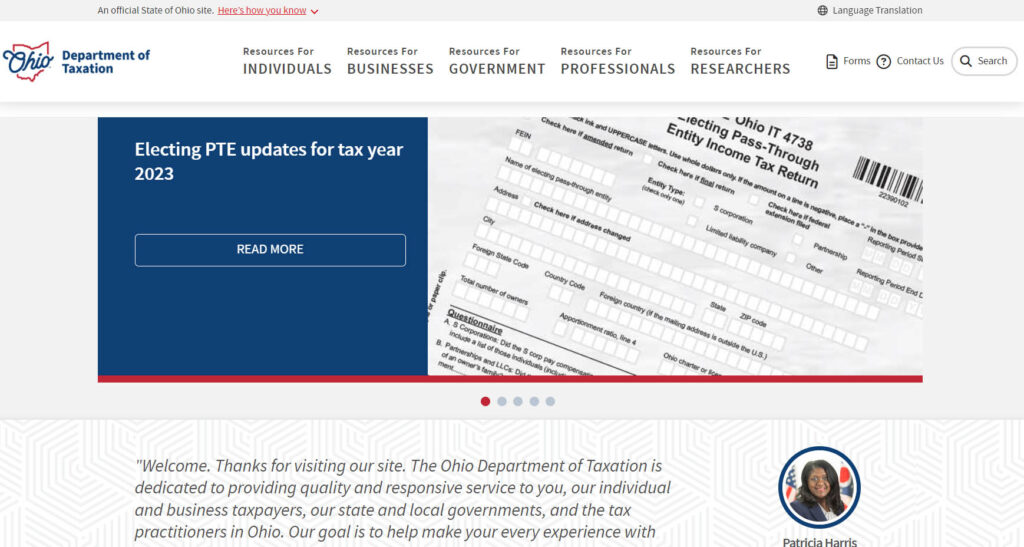The 2023-2024 Ohio budget introduces significant tax changes, impacting residents and businesses alike. Among the noteworthy alterations are the introduction of new tax credits, providing opportunities for both individuals and companies to benefit from financial incentives. These credits cover various sectors, such as energy-efficient investments, job creation initiatives, and innovation-driven projects.
In addition to tax credits, the budget revises filing thresholds, potentially altering the tax obligations for different income brackets. You must carefully review these thresholds to ensure accurate compliance with the updated tax regulations.
Furthermore, the budget extends and expands retail holidays, offering consumers and businesses strategic opportunities for cost savings. These designated periods, often featuring reduced or eliminated sales tax on certain goods, can significantly impact purchasing decisions and stimulate economic activity.
If you operate a business in Ohio, you must stay abreast of these changes to align their strategies with the evolving tax landscape. This includes adjusting financial projections, exploring new avenues for tax savings, and ensuring compliance with the updated regulations.
SUMMARY
- Adjust to Lower Income Tax Rates & Fewer Brackets
- Re-Evaluate Commercial Activity Tax Exclusions, Minimums and Filing Cadences
- Anticipate Multi-Week Sales Tax Holiday in 2024
- Leverage Optional Remote Worker Municipal Tax Rules
- Update Penalty and Interest Expectations
- Model Property Tax Savings Opportunities
- Maintain Rigor Meeting Higher Tax Information and Audit Burdens
- Proactively Model Total State Tax Impacts
Recap
1. Adjust to Lower Income Tax Rates & Fewer Brackets
To embrace the new Ohio 2023 tax updates, adjust to the lower income tax rates.
Recent changes to Ohio’s tax landscape necessitate a reevaluation of income tax planning, particularly with the flattening and reduction of tax brackets.
Consider modeling the implications of the lowered 3.75% income tax cap for the highest earners, a reduction from the previous 3.99%, to better understand the impact on your financial scenario. Take note of the elimination of middle two rates, which streamlines the state’s tax structure to feature just two brackets by 2024, potentially affecting taxpayers differently.
Incorporate a careful examination of your eligibility for the new pass-through entity tax credit designed for those who pay taxes to other states. Ensure a meticulous calculation of state taxes owed, taking into account the revised marginal rate structure.
These adjustments require a detailed financial analysis to navigate the evolving tax landscape effectively and optimize your tax position in light of the recent changes in Ohio’s tax policies.
>>>MORE: Michigan State Taxes: 2023 Update
2. Re-Evaluate Commercial Activity Tax Exclusions, Minimums and Filing Cadences
To welcome the new Ohio 2023 tax updates, verify your eligibility for the substantially increased exclusions, now raised sixfold to $6 million, ensuring that you leverage these exclusions effectively.
When your financial circumstances surpass the revised thresholds, consider initiating the process for tax registration cancellation. Take advantage of the removal of the previous $150 minimum tax compliance burden, offering potential relief to taxpayers.
Adapt to the transition from an annual to mandatory quarterly tax administration requirement, adjusting your operational processes accordingly.
In-depth scrutiny of Research and Development (R&D) tax credits is essential, as these now require member-level application, necessitating a careful review of your eligibility and application process. These changes call for strategic planning and a proactive approach to compliance for optimal financial management in the evolving tax environment.
3. Anticipate Multi-Week Sales Tax Holiday in 2024
To accept the new Ohio 2023 tax updates, mark August 2024 in your calendar for the anticipated expanded sales tax holiday, ensuring you prepare for increased consumer activity during this period.
Verify the list of specific non-exempt items, such as titled vehicles, alcohol, and tobacco, to accurately plan for sales tax implications. Acknowledge that the commissioner now holds the authority to designate the duration of the holiday, ranging from 3 to 14 days.
Actively engage with local public officials to provide feedback and influence decisions that maximize the duration of the sales tax holiday. Adjust your retail operational planning, inventory, and staffing to capitalize on the anticipated surge in sales during this high-demand period. These strategic measures will position your business to make the most of the expanded sales tax holiday.
>>>PRO TIPS: How to File Taxes When Living Abroad
4. Leverage Optional Remote Worker Municipal Tax Rules
To integrate the new Ohio 2023 tax updates, thoroughly examine the newly introduced flexibility in localized tax apportionment for remote staff, considering options such as directing taxes to company hub locations that house leadership or clients. Acknowledge that geographic employee withholding obligations remain unchanged.
Confirm your eligibility as an employer with out-of-region adjustable workforce sites and ensure compliance by providing the required municipal location documentation to optimize your tax policy.
These steps will help you navigate the complexities of the evolving tax landscape for remote staff and maintain regulatory adherence.
5. Update Penalty and Interest Expectations
To incorporate the new Ohio 2023 tax updates, be aware of new penalties/interests.
Take note of the maximum $25 tax penalty limits for delinquencies and be aware of the one-time waiver available for the first instance of non-compliance. Ensure you secure necessary filing extensions early to avoid stringent restrictions.
Confirm the enforcement prohibitions on collections during extension periods and familiarize yourself with the criteria and process to pursue refunds for overpaid interest/penalties. This understanding will help you navigate the tax landscape effectively and manage potential financial implications.
>>>GET SMARTER: Florida State Taxes: 2023 Update
6. Model Property Tax Savings Opportunities
To grasp the new 2023 taxes in Ohio, model property tax savings opportunities. Ensure you verify eligibility for the new 2-year abatements or refunds on brownfield sites, and take the time to learn about affordable housing incentives such as construction and development credits.
Consult with experts to identify qualifying capital improvement projects and determine the optimal way to access specialized homeowner provisions. Make sure to locate and familiarize yourself with the necessary applications, forms, and documentation needed for these incentives.
7. Maintain Higher Tax Information and Audit Burdens
To comprehend the new 2023 taxes in Ohio, maintain meeting higher tax information and audit burdens.
Ensure strict adherence to the 4-year qualified R&D tax credit evidence retention rules, employing adequate entity-level accounting separations under the tightened affiliation standards.
Develop ironclad paper trails that support reasonable apportionment methodologies and prepare to furnish detailed expense substantiation across examinations. Index thorough supporting materials to readily access per audit demands.
8. Model Total State Tax Impacts
To fathom the new 2023 taxes in Ohio, aggregate holistic tax savings opportunities by confirming precise entities or filing eligibility for each component investigated. Quantify and compare pre vs. post law effective tax rates to surface previously unidentified tax minimization pathways.
Uncover the need for expert guidance navigating complexity to ensure comprehensive understanding and optimal utilization of available tax provisions.
With sweeping policy updates instituted, both Ohio businesses and individual taxpayers have a raft of new filing, documentation, payment and planning responsibilities to satisfy.
Recap
Navigating Michigan’s intricate tax landscape becomes crucial with the sweeping changes introduced by Public Act 4 in 2023. This legislation reshapes retirement income exemptions, enhances tax credits for working families, reallocates corporate tax revenue, and initiates a temporary income tax rate cut. Whether an individual or a business, staying informed is key.
From understanding the phased-in retirement income exemptions to grasping corporate tax shifts, this guide provides actionable steps to help you adapt to the evolving tax scenario. Regularly checking the state’s tax site, keeping an eye on legislative updates, and seeking professional advice will ensure compliance and avoid potential financial and legal challenges.
This post is to be used for informational purposes only and does not constitute legal, business, or tax advice. Each person should consult his or her own attorney, business advisor, or tax advisor with respect to matters referenced in this post. . For comprehensive tax, legal or financial advice, always contact a qualified professional in your area. S’witty Kiwi assumes no liability for actions taken in reliance upon the information contained herein.









No Comment! Be the first one.